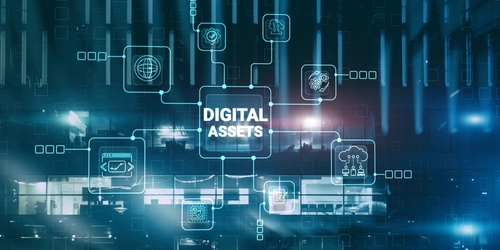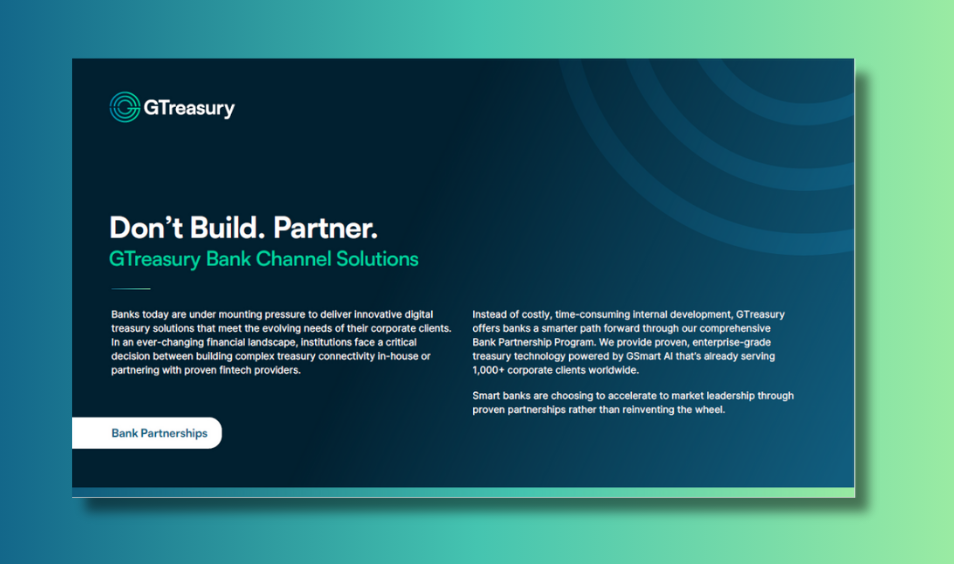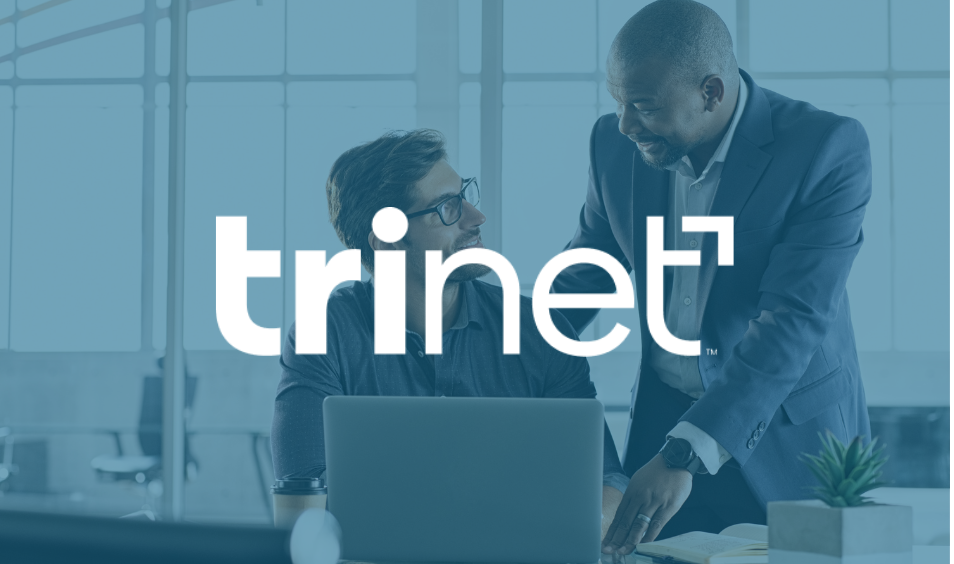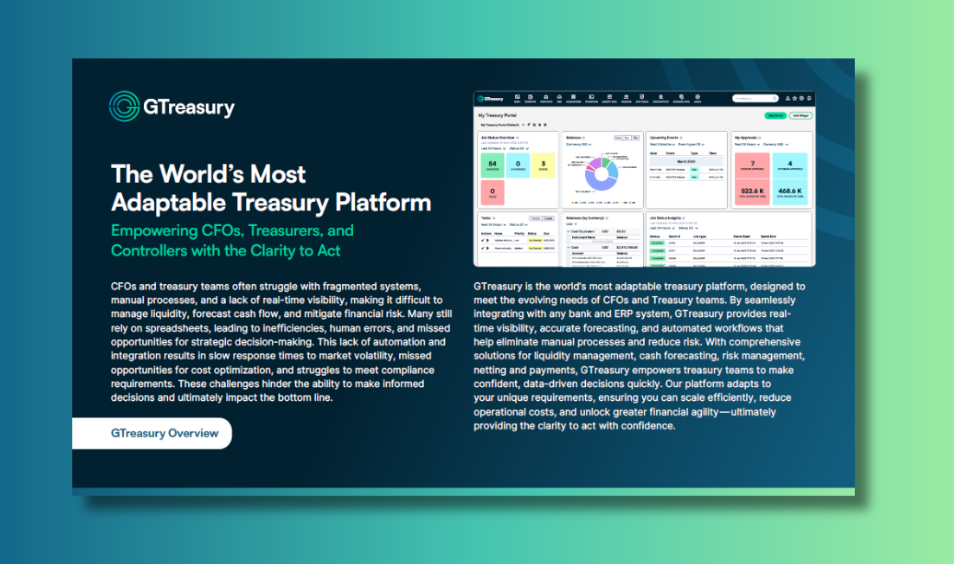What is a Treasury Management System? Your Complete Guide to TMS Solution


In today's complex financial landscape, treasury management systems (TMS) have become essential tools for CFOs and treasury professionals seeking to optimize cash flow, mitigate risk, and drive strategic growth. This comprehensive FAQ guide answers the most common questions about treasury management systems and explains how the right TMS can transform your organization's financial operations.
What Is a Treasury Management System?
A treasury management system (TMS) is a comprehensive software platform that automates, centralizes, and optimizes an organization's treasury functions. A TMS consolidates cash management, risk management, payments, and financial reporting into a single, integrated solution that provides real-time visibility into your organization's financial position.
Modern treasury management systems like GTreasury's solution platform go beyond basic cash tracking to deliver strategic insights that empower CFOs to make informed decisions quickly. Unlike traditional spreadsheet-based approaches or monolithic legacy systems, today's TMS solutions offer flexible, scalable architectures that grow with your business.
Key components of a treasury management system include:
- Cash positioning and forecasting for real-time liquidity management
- Payment processing and controls for secure, automated transactions
- Risk management modules for FX, interest rate, and credit risk
- Debt and investment management for portfolio optimization
- Bank connectivity and reconciliation for streamlined operations
- Regulatory compliance and reporting for audit readiness
Why Do Organizations Need a Treasury Management System?
The treasury management system market has experienced significant growth, with industry analysts reporting that over 60% of mid-market and enterprise organizations are actively evaluating or implementing TMS solutions. This surge is driven by increasing regulatory complexity, volatile market conditions, and the limitations of manual processes that can no longer scale with business growth.
Common challenges driving TMS adoption across industries include:
- Manual Process Inefficiencies: Studies show that treasury teams using spreadsheets and manual processes spend 40-60% of their time on data collection and reconciliation rather than strategic analysis.
- Regulatory Compliance Pressure: Evolving regulations like ISO 20022, SOX requirements, and international reporting standards are creating compliance burdens that manual systems cannot adequately address.
- Market Volatility Impact: In today's uncertain economic environment, organizations need real-time visibility and rapid decision-making capabilities that traditional tools cannot provide.
90% of CFOs state cash visibility and forecasting as their #1 concern, making treasury management systems more critical than ever. Organizations implement TMS solutions to address several key challenges:
Enhanced Cash Visibility
Manual processes and disconnected systems create blind spots in cash management. A treasury management system provides comprehensive cash visibility across all accounts, entities, and geographies, enabling treasurers to optimize liquidity and make strategic decisions with confidence.
Operational Efficiency
Treasury teams spend too much time on manual, repetitive tasks instead of strategic initiatives. TMS automation eliminates time-consuming processes like data entry, reconciliation, and report generation, freeing up resources for higher-value activities.
Risk Mitigation
In volatile markets, organizations need sophisticated tools to identify, measure, and manage financial risks. GTreasury's risk management solutions provide real-time exposure monitoring and advanced analytics to protect against FX, interest rate, and credit risks.
Regulatory Compliance
Evolving regulations like ISO 20022 and increasing audit requirements demand robust controls and audit trails. Treasury management systems automate compliance processes and provide the documentation needed for regulatory reporting.
The Importance of Cash Forecasting in Treasury Management Systems
Whether you're a growing mid-market company with multiple divisions or a large enterprise with global operations, cash flow forecasting complexity increases significantly as organizations scale. GTreasury's advanced cash forecasting solution addresses these challenges through sophisticated multi-dimensional modeling and AI-powered insights that adapt to your organizational structure.
Multi-Business Unit and Regional Forecasting
GTreasury's Cash Flow Forecasting solution enables organizations to manage multiple business units, reporting entities, and currencies through a single, unified cash flow model. Create detailed forecasts at the subsidiary, business unit, or regional level while maintaining consolidated corporate views. The platform handles multi-currency operations with native support and offers flexible reporting calendars to match your organization's unique business cycles.
AI-Amplified Forecast Intelligence
GTreasury's GSmart Forecast Insights leverages artificial intelligence to revolutionize cash forecasting accuracy:
- Automated Variance Analysis: The AI engine automatically compares forecasted cash flows to actuals, identifying patterns and outliers without manual intervention, saving treasury teams hours of analysis time.
- Generative AI Insight Agent: The intelligent agent highlights significant data patterns and provides clear, actionable insights in natural language, transforming complex data into strategic intelligence.
- Proactive Anomaly Detection: Machine learning algorithms continuously monitor cash flow patterns and flag unusual variances, enabling teams to address issues before they impact liquidity.
Real-Time Multi-Entity Integration
The platform connects directly with ERPs and banking systems to streamline data capture across all business entities. Cash flow data is automatically categorized and posted to appropriate business unit forecasts in real-time, while AP/AR data combines with machine learning to create accurate short-to-medium term projections. This provides instant visibility into cash positions across all subsidiaries and regions, enabling optimal cash allocation and internal optimization opportunities.
This comprehensive approach enables CFOs and treasury teams to manage organizational structures with unprecedented accuracy and efficiency, transforming cash forecasting from a manual process into a strategic advantage.
How Does a Treasury Management System Work?
A modern TMS operates as a centralized hub that connects all your financial data sources through APIs and secure integrations. Here's how GTreasury's approach works:
1. Data Aggregation
GTreasury's ClearConnect suite automatically gathers data from banks, ERPs, and other financial systems using industry-leading connectivity. This eliminates manual data entry and ensures real-time accuracy.
2. Intelligent Processing
The system categorizes and processes financial data using machine learning algorithms. GTreasury's cash flow forecasting solution leverages AI to improve forecast accuracy and provide variance insights.
3. Real-Time Analytics
Advanced dashboards and reporting tools transform raw data into actionable insights. Users can drill down from high-level summaries to transaction details, enabling both strategic planning and operational execution.
4. Automated Workflows
The TMS automates routine processes like payment processing, reconciliation, and journal entries while maintaining appropriate controls and approval workflows.
What Are the Key Benefits of Implementing a Treasury Management System?
Organizations that implement treasury management systems experience significant measurable benefits:
Faster Implementation and ROI
GTreasury customers can achieve cash visibility and forecasting in 90 days, dramatically faster than traditional implementations. This rapid deployment accelerates time-to-value and ROI realization.
Improved Forecast Accuracy
Automated data collection and AI-powered analytics significantly improve cash flow forecasting precision. GTreasury's solution provides variance analysis and machine learning insights that enhance decision-making capabilities.
Cost Savings
Treasury management systems reduce operational costs through automation, eliminate manual errors, optimize cash utilization, and provide better visibility for investment and borrowing decisions. Organizations also save on banking fees through centralized cash management.
Enhanced Security and Controls
Modern TMS platforms include sophisticated fraud prevention, approval workflows, and audit trails. GTreasury's payment solutions provide multiple layers of security and compliance controls.
Strategic Enablement
By automating routine tasks, treasury teams can focus on strategic initiatives like capital structure optimization, investment analysis, and business partnership.
What Are Common Treasury Management System Implementation Challenges?
Organizations across all industries face similar hurdles when implementing treasury management systems, regardless of the vendor selected. Understanding these challenges helps ensure successful deployment and adoption.
Universal Implementation Challenges
Data Migration Complexity: Moving years of historical financial data from legacy systems, spreadsheets, and multiple databases requires careful planning and validation. Organizations often discover data quality issues that must be resolved before migration.
Integration Architecture: Connecting TMS platforms with existing ERPs, banking systems, and third-party applications can be technically complex, particularly when dealing with older systems that lack modern APIs.
User Adoption and Change Management: Treasury teams accustomed to familiar processes may resist new workflows. Successful implementations require comprehensive training and clear communication about benefits.
Customization Balance: Organizations must find the right balance between configuring systems to match existing processes versus adapting processes to leverage system capabilities.
Regulatory and Compliance Alignment: Ensuring the new system meets all regulatory requirements while maintaining proper audit trails and controls throughout the transition.
How Leading TMS Providers Address These Challenges
Modern TMS platforms like GTreasury's solution platform are designed to minimize implementation complexity through pre-built integrations, automated data validation, and phased deployment approaches. GTreasury's 90-day implementation timeline for cash visibility and forecasting demonstrates how proper platform architecture can significantly reduce traditional implementation barriers.
What Types of Treasury Management Systems Are Available?
The treasury management system market offers various solutions designed to meet different organizational needs and complexity levels. Understanding the landscape helps organizations identify the most suitable approach for their requirements.
TMS Market Categories
Enterprise-Grade Comprehensive Platforms: Large-scale solutions designed for multinational corporations with complex treasury operations, multiple currencies, and extensive regulatory requirements. These systems typically offer full-featured functionality but may require longer implementation timelines.
Mid-Market Focused Solutions: Scalable platforms designed for growing companies that need sophisticated treasury capabilities without enterprise-level complexity. These solutions balance functionality with faster deployment and lower total cost of ownership.
Specialized Point Solutions: Focused applications that address specific treasury functions like cash forecasting, payments, or risk management. Organizations may combine multiple point solutions or use them alongside broader platforms.
Cloud-Native vs. On-Premise Deployment: Modern SaaS-based platforms offer superior scalability, automatic updates, and reduced IT overhead compared to traditional on-premise installations, though some organizations may prefer on-premise solutions for specific regulatory or security requirements.
Evaluating TMS Architecture Approaches
Monolithic vs. Modular Systems: Traditional monolithic platforms provide all functionality in a single system but may force organizations to pay for unused features. Modular approaches allow organizations to implement only needed capabilities while maintaining integration and scalability.
GTreasury's solution approach exemplifies this flexibility, allowing organizations to start with cash visibility and forecasting while maintaining the ability to add payments, risk management, and other capabilities as needs evolve.
How Do You Choose the Right Treasury Management System?
Selecting the optimal TMS requires careful evaluation of your organization's specific needs and growth trajectory. Consider these key factors:
Modular vs. Monolithic Architecture
GTreasury's solution approach allows organizations to implement only the functionality they need today while maintaining the flexibility to add capabilities as requirements evolve. This contrasts with large, cumbersome monolithic systems that force organizations to pay for unused functionality.
Implementation Speed and Flexibility
Look for solutions that can be deployed quickly without extensive customization. GTreasury's SaaS platform and pre-built integrations enable rapid implementation compared to legacy systems requiring months of configuration.
Connectivity and Integration Capabilities
Ensure the TMS can connect to all your existing systems. GTreasury's ClearConnect provides industry-leading bank API connectivity and ERP integrations.
Scalability and Global Capabilities
Choose a platform that can support your organization's growth. GTreasury serves over 1000+ customers across 160 countries, providing proven scalability for global operations.
Vendor Expertise and Support
Partner with a vendor that understands treasury operations. GTreasury has nearly 40 years of treasury expertise and provides dedicated support throughout implementation and beyond.
What's the Difference Between Treasury Management and Cash Management?
While often used interchangeably, treasury management and cash management serve distinct functions:
Cash Management focuses on daily operational activities like monitoring bank balances, processing payments, and maintaining adequate liquidity for short-term obligations.
Treasury Management encompasses a broader strategic scope, including cash management plus risk management, investment decisions, debt management, financial reporting, and strategic planning.
A comprehensive treasury management system addresses both operational cash management needs and strategic treasury requirements, providing the foundation for effective financial stewardship.
How Does a TMS Support Risk Management?
Modern treasury management systems integrate sophisticated risk management capabilities:
Real-Time Risk Monitoring
GTreasury's risk solutions provide real-time visualization of FX, interest rate, and credit exposures with advanced analytics and scenario modeling.
Hedge Accounting and Compliance
The platform automates hedge accounting calculations, ensures compliance with US GAAP and IFRS standards, and provides audit trails for regulatory requirements.
Portfolio Management
Integrated debt and investment management tools enable treasurers to optimize their entire portfolio while managing risk exposures effectively.
What ROI Can Organizations Expect from a Treasury Management System?
Industry research and case studies demonstrate consistent returns from treasury management system implementations across different organization sizes and industries.
Industry ROI Benchmarks
Implementation Timelines: Market studies show average TMS implementations range from 6-18 months for comprehensive deployments, though modern cloud-based platforms can achieve basic functionality in 60-90 days.
Operational Efficiency Gains: Organizations typically report 15-30% improvements in operational efficiency through process automation, with treasury teams spending significantly more time on strategic activities versus manual tasks.
Error Reduction: Automated processes eliminate 60-80% of manual data entry errors, reducing costly mistakes in cash management, payments, and financial reporting.
Cost Optimization: Better cash visibility enables optimized investment and borrowing decisions, with organizations reporting improved working capital management and reduced banking fees.
Measured Benefits Across Organization Types
Time Savings: Treasury teams report reclaiming 20-40 hours per month previously spent on manual data collection, reconciliation, and report preparation.
Strategic Value Enhancement: With operational tasks automated, treasury professionals can focus on risk management, strategic planning, and business partnership activities.
Compliance Cost Reduction: Automated audit trails and regulatory reporting capabilities reduce the time and cost associated with compliance activities and external audits.
GTreasury customers typically see implementation ROI within the first year, with many organizations achieving cash visibility and forecasting benefits within 90 days of deployment. The combination of rapid implementation and immediate operational improvements accelerates return realization compared to traditional treasury system approaches.
How Is Treasury Technology Evolving?
How Does Responsible AI Implementation Enhance Treasury Management Systems?
As artificial intelligence becomes increasingly integrated into treasury management systems, responsible AI implementation is critical for maintaining trust, accuracy, and regulatory compliance. GTreasury's approach to AI integration prioritizes transparency, human oversight, and ethical data usage while delivering powerful automation capabilities.
Transparent AI Decision-Making
Modern treasury management systems must provide clear visibility into how AI algorithms make decisions. GTreasury's AI-powered features, including GSmart Forecast Insights, are designed with explainable AI principles that allow treasury professionals to understand the reasoning behind automated recommendations. This transparency enables users to validate AI-generated insights and maintain confidence in system outputs.
Human-AI Collaboration
Rather than replacing human expertise, responsible AI in treasury management systems augments human decision-making capabilities. GTreasury's platform maintains appropriate human oversight points throughout automated processes, ensuring that critical financial decisions remain under human control while leveraging AI for data analysis, pattern recognition, and routine task automation.
Data Security and Privacy
AI implementation in treasury systems requires robust data governance frameworks. GTreasury's SaaS platform incorporates multiple layers of security to protect sensitive financial data used in AI algorithms, including encryption, access controls, and audit trails that ensure AI processing maintains the same security standards as traditional treasury functions.
Regulatory Compliance and Risk Management
As regulatory bodies develop frameworks for AI usage in financial services, treasury management systems must be designed to support compliance requirements. GTreasury's AI features include built-in audit capabilities and documentation that help organizations demonstrate responsible AI usage to regulators and auditors while maintaining operational efficiency.
Continuous Learning and Improvement
Responsible AI implementation includes mechanisms for continuous monitoring and improvement of AI model performance. GTreasury's platform provides feedback loops that allow treasury teams to refine AI algorithms based on actual outcomes, ensuring that automated insights become more accurate and valuable over time while maintaining appropriate risk controls.
This balanced approach to AI integration ensures that treasury teams can leverage advanced automation capabilities while maintaining the control, transparency, and compliance requirements essential for effective financial management.
How Is Treasury Technology Evolving?
The treasury management system landscape is experiencing rapid transformation driven by technological advancement, regulatory changes, and evolving business requirements across all market segments.
Industry-Wide Technology Trends
API-First Integration Architecture: The shift from traditional file-based bank connections to real-time API integrations is transforming how treasury systems access and process financial data. Modern platforms prioritize seamless connectivity with banking partners and enterprise systems.
Artificial Intelligence and Machine Learning: AI adoption in treasury is accelerating across the industry, with applications ranging from cash flow forecasting and fraud detection to automated reconciliation and risk analysis. Leading providers are incorporating AI capabilities while maintaining appropriate human oversight.
Cloud-Native Platform Migration: Organizations are increasingly moving from on-premise treasury systems to cloud-based solutions that offer superior scalability, automatic updates, and reduced IT overhead.
Regulatory and Market Drivers
ISO 20022 Compliance: Global payment messaging standardization is driving system upgrades across the industry, with organizations needing platforms that support both current and future payment formats.
Enhanced Risk Management Requirements: Increasing market volatility and regulatory scrutiny are pushing organizations toward more sophisticated risk management capabilities within their treasury platforms.
Real-Time Payment Adoption: The growth of instant payment networks like RTP and FedNow is creating demand for treasury systems that can process and manage real-time transactions.
GTreasury's Technology Leadership
Modern platforms like GTreasury are leading these industry trends through innovations like ClearConnect for comprehensive connectivity, AI-powered solution amplifiers from GSmart, and solution architecture that adapts to changing organizational needs.
The convergence of these trends is creating opportunities for organizations to implement more capable, flexible treasury management systems that can adapt to future requirements while delivering immediate value.
Getting Started with GTreasury's Treasury Management System
Ready to transform your treasury operations? GTreasury's solution-based treasury management system provides The Clarity to Act with confidence in today's complex financial environment.
Why choose GTreasury?
- Fastest implementation: Up and running in 90 days with cash visibility and forecasting
- Solution flexibility: Consume only what you need when you need it
- Proven scale: Trusted by 1000+ customers across 160 countries
- Expert support: Nearly 40 years of treasury expertise backing your success
- Connected platform: Industry-leading connectivity to banks, ERPs, and market data
Whether you're looking to improve cash visibility, automate payment processes, or implement comprehensive risk management, GTreasury's treasury management system provides the foundation for treasury excellence.
Request a demo today to see how GTreasury can transform your treasury operations and provide the clarity to act on strategic financial decisions.
GTreasury is the global leader in treasury management systems, serving over 1000+ customers across 30+ industries in 160+ countries. Our solution-based, cloud-based platform provides treasury and finance teams with real-time insights, automated workflows, and the connectivity needed to optimize cash, manage risk, and drive strategic growth.
Learn more about GTreasury's treasury management solutions:
What is a Treasury Management System? Your Complete Guide to TMS Solution
In today's complex financial landscape, treasury management systems (TMS) have become essential tools for CFOs and treasury professionals seeking to optimize cash flow, mitigate risk, and drive strategic growth. This comprehensive FAQ guide answers the most common questions about treasury management systems and explains how the right TMS can transform your organization's financial operations.
What Is a Treasury Management System?
A treasury management system (TMS) is a comprehensive software platform that automates, centralizes, and optimizes an organization's treasury functions. A TMS consolidates cash management, risk management, payments, and financial reporting into a single, integrated solution that provides real-time visibility into your organization's financial position.
Modern treasury management systems like GTreasury's solution platform go beyond basic cash tracking to deliver strategic insights that empower CFOs to make informed decisions quickly. Unlike traditional spreadsheet-based approaches or monolithic legacy systems, today's TMS solutions offer flexible, scalable architectures that grow with your business.
Key components of a treasury management system include:
- Cash positioning and forecasting for real-time liquidity management
- Payment processing and controls for secure, automated transactions
- Risk management modules for FX, interest rate, and credit risk
- Debt and investment management for portfolio optimization
- Bank connectivity and reconciliation for streamlined operations
- Regulatory compliance and reporting for audit readiness
Why Do Organizations Need a Treasury Management System?
The treasury management system market has experienced significant growth, with industry analysts reporting that over 60% of mid-market and enterprise organizations are actively evaluating or implementing TMS solutions. This surge is driven by increasing regulatory complexity, volatile market conditions, and the limitations of manual processes that can no longer scale with business growth.
Common challenges driving TMS adoption across industries include:
- Manual Process Inefficiencies: Studies show that treasury teams using spreadsheets and manual processes spend 40-60% of their time on data collection and reconciliation rather than strategic analysis.
- Regulatory Compliance Pressure: Evolving regulations like ISO 20022, SOX requirements, and international reporting standards are creating compliance burdens that manual systems cannot adequately address.
- Market Volatility Impact: In today's uncertain economic environment, organizations need real-time visibility and rapid decision-making capabilities that traditional tools cannot provide.
90% of CFOs state cash visibility and forecasting as their #1 concern, making treasury management systems more critical than ever. Organizations implement TMS solutions to address several key challenges:
Enhanced Cash Visibility
Manual processes and disconnected systems create blind spots in cash management. A treasury management system provides comprehensive cash visibility across all accounts, entities, and geographies, enabling treasurers to optimize liquidity and make strategic decisions with confidence.
Operational Efficiency
Treasury teams spend too much time on manual, repetitive tasks instead of strategic initiatives. TMS automation eliminates time-consuming processes like data entry, reconciliation, and report generation, freeing up resources for higher-value activities.
Risk Mitigation
In volatile markets, organizations need sophisticated tools to identify, measure, and manage financial risks. GTreasury's risk management solutions provide real-time exposure monitoring and advanced analytics to protect against FX, interest rate, and credit risks.
Regulatory Compliance
Evolving regulations like ISO 20022 and increasing audit requirements demand robust controls and audit trails. Treasury management systems automate compliance processes and provide the documentation needed for regulatory reporting.
The Importance of Cash Forecasting in Treasury Management Systems
Whether you're a growing mid-market company with multiple divisions or a large enterprise with global operations, cash flow forecasting complexity increases significantly as organizations scale. GTreasury's advanced cash forecasting solution addresses these challenges through sophisticated multi-dimensional modeling and AI-powered insights that adapt to your organizational structure.
Multi-Business Unit and Regional Forecasting
GTreasury's Cash Flow Forecasting solution enables organizations to manage multiple business units, reporting entities, and currencies through a single, unified cash flow model. Create detailed forecasts at the subsidiary, business unit, or regional level while maintaining consolidated corporate views. The platform handles multi-currency operations with native support and offers flexible reporting calendars to match your organization's unique business cycles.
AI-Amplified Forecast Intelligence
GTreasury's GSmart Forecast Insights leverages artificial intelligence to revolutionize cash forecasting accuracy:
- Automated Variance Analysis: The AI engine automatically compares forecasted cash flows to actuals, identifying patterns and outliers without manual intervention, saving treasury teams hours of analysis time.
- Generative AI Insight Agent: The intelligent agent highlights significant data patterns and provides clear, actionable insights in natural language, transforming complex data into strategic intelligence.
- Proactive Anomaly Detection: Machine learning algorithms continuously monitor cash flow patterns and flag unusual variances, enabling teams to address issues before they impact liquidity.
Real-Time Multi-Entity Integration
The platform connects directly with ERPs and banking systems to streamline data capture across all business entities. Cash flow data is automatically categorized and posted to appropriate business unit forecasts in real-time, while AP/AR data combines with machine learning to create accurate short-to-medium term projections. This provides instant visibility into cash positions across all subsidiaries and regions, enabling optimal cash allocation and internal optimization opportunities.
This comprehensive approach enables CFOs and treasury teams to manage organizational structures with unprecedented accuracy and efficiency, transforming cash forecasting from a manual process into a strategic advantage.
How Does a Treasury Management System Work?
A modern TMS operates as a centralized hub that connects all your financial data sources through APIs and secure integrations. Here's how GTreasury's approach works:
1. Data Aggregation
GTreasury's ClearConnect suite automatically gathers data from banks, ERPs, and other financial systems using industry-leading connectivity. This eliminates manual data entry and ensures real-time accuracy.
2. Intelligent Processing
The system categorizes and processes financial data using machine learning algorithms. GTreasury's cash flow forecasting solution leverages AI to improve forecast accuracy and provide variance insights.
3. Real-Time Analytics
Advanced dashboards and reporting tools transform raw data into actionable insights. Users can drill down from high-level summaries to transaction details, enabling both strategic planning and operational execution.
4. Automated Workflows
The TMS automates routine processes like payment processing, reconciliation, and journal entries while maintaining appropriate controls and approval workflows.
What Are the Key Benefits of Implementing a Treasury Management System?
Organizations that implement treasury management systems experience significant measurable benefits:
Faster Implementation and ROI
GTreasury customers can achieve cash visibility and forecasting in 90 days, dramatically faster than traditional implementations. This rapid deployment accelerates time-to-value and ROI realization.
Improved Forecast Accuracy
Automated data collection and AI-powered analytics significantly improve cash flow forecasting precision. GTreasury's solution provides variance analysis and machine learning insights that enhance decision-making capabilities.
Cost Savings
Treasury management systems reduce operational costs through automation, eliminate manual errors, optimize cash utilization, and provide better visibility for investment and borrowing decisions. Organizations also save on banking fees through centralized cash management.
Enhanced Security and Controls
Modern TMS platforms include sophisticated fraud prevention, approval workflows, and audit trails. GTreasury's payment solutions provide multiple layers of security and compliance controls.
Strategic Enablement
By automating routine tasks, treasury teams can focus on strategic initiatives like capital structure optimization, investment analysis, and business partnership.
What Are Common Treasury Management System Implementation Challenges?
Organizations across all industries face similar hurdles when implementing treasury management systems, regardless of the vendor selected. Understanding these challenges helps ensure successful deployment and adoption.
Universal Implementation Challenges
Data Migration Complexity: Moving years of historical financial data from legacy systems, spreadsheets, and multiple databases requires careful planning and validation. Organizations often discover data quality issues that must be resolved before migration.
Integration Architecture: Connecting TMS platforms with existing ERPs, banking systems, and third-party applications can be technically complex, particularly when dealing with older systems that lack modern APIs.
User Adoption and Change Management: Treasury teams accustomed to familiar processes may resist new workflows. Successful implementations require comprehensive training and clear communication about benefits.
Customization Balance: Organizations must find the right balance between configuring systems to match existing processes versus adapting processes to leverage system capabilities.
Regulatory and Compliance Alignment: Ensuring the new system meets all regulatory requirements while maintaining proper audit trails and controls throughout the transition.
How Leading TMS Providers Address These Challenges
Modern TMS platforms like GTreasury's solution platform are designed to minimize implementation complexity through pre-built integrations, automated data validation, and phased deployment approaches. GTreasury's 90-day implementation timeline for cash visibility and forecasting demonstrates how proper platform architecture can significantly reduce traditional implementation barriers.
What Types of Treasury Management Systems Are Available?
The treasury management system market offers various solutions designed to meet different organizational needs and complexity levels. Understanding the landscape helps organizations identify the most suitable approach for their requirements.
TMS Market Categories
Enterprise-Grade Comprehensive Platforms: Large-scale solutions designed for multinational corporations with complex treasury operations, multiple currencies, and extensive regulatory requirements. These systems typically offer full-featured functionality but may require longer implementation timelines.
Mid-Market Focused Solutions: Scalable platforms designed for growing companies that need sophisticated treasury capabilities without enterprise-level complexity. These solutions balance functionality with faster deployment and lower total cost of ownership.
Specialized Point Solutions: Focused applications that address specific treasury functions like cash forecasting, payments, or risk management. Organizations may combine multiple point solutions or use them alongside broader platforms.
Cloud-Native vs. On-Premise Deployment: Modern SaaS-based platforms offer superior scalability, automatic updates, and reduced IT overhead compared to traditional on-premise installations, though some organizations may prefer on-premise solutions for specific regulatory or security requirements.
Evaluating TMS Architecture Approaches
Monolithic vs. Modular Systems: Traditional monolithic platforms provide all functionality in a single system but may force organizations to pay for unused features. Modular approaches allow organizations to implement only needed capabilities while maintaining integration and scalability.
GTreasury's solution approach exemplifies this flexibility, allowing organizations to start with cash visibility and forecasting while maintaining the ability to add payments, risk management, and other capabilities as needs evolve.
How Do You Choose the Right Treasury Management System?
Selecting the optimal TMS requires careful evaluation of your organization's specific needs and growth trajectory. Consider these key factors:
Modular vs. Monolithic Architecture
GTreasury's solution approach allows organizations to implement only the functionality they need today while maintaining the flexibility to add capabilities as requirements evolve. This contrasts with large, cumbersome monolithic systems that force organizations to pay for unused functionality.
Implementation Speed and Flexibility
Look for solutions that can be deployed quickly without extensive customization. GTreasury's SaaS platform and pre-built integrations enable rapid implementation compared to legacy systems requiring months of configuration.
Connectivity and Integration Capabilities
Ensure the TMS can connect to all your existing systems. GTreasury's ClearConnect provides industry-leading bank API connectivity and ERP integrations.
Scalability and Global Capabilities
Choose a platform that can support your organization's growth. GTreasury serves over 1000+ customers across 160 countries, providing proven scalability for global operations.
Vendor Expertise and Support
Partner with a vendor that understands treasury operations. GTreasury has nearly 40 years of treasury expertise and provides dedicated support throughout implementation and beyond.
What's the Difference Between Treasury Management and Cash Management?
While often used interchangeably, treasury management and cash management serve distinct functions:
Cash Management focuses on daily operational activities like monitoring bank balances, processing payments, and maintaining adequate liquidity for short-term obligations.
Treasury Management encompasses a broader strategic scope, including cash management plus risk management, investment decisions, debt management, financial reporting, and strategic planning.
A comprehensive treasury management system addresses both operational cash management needs and strategic treasury requirements, providing the foundation for effective financial stewardship.
How Does a TMS Support Risk Management?
Modern treasury management systems integrate sophisticated risk management capabilities:
Real-Time Risk Monitoring
GTreasury's risk solutions provide real-time visualization of FX, interest rate, and credit exposures with advanced analytics and scenario modeling.
Hedge Accounting and Compliance
The platform automates hedge accounting calculations, ensures compliance with US GAAP and IFRS standards, and provides audit trails for regulatory requirements.
Portfolio Management
Integrated debt and investment management tools enable treasurers to optimize their entire portfolio while managing risk exposures effectively.
What ROI Can Organizations Expect from a Treasury Management System?
Industry research and case studies demonstrate consistent returns from treasury management system implementations across different organization sizes and industries.
Industry ROI Benchmarks
Implementation Timelines: Market studies show average TMS implementations range from 6-18 months for comprehensive deployments, though modern cloud-based platforms can achieve basic functionality in 60-90 days.
Operational Efficiency Gains: Organizations typically report 15-30% improvements in operational efficiency through process automation, with treasury teams spending significantly more time on strategic activities versus manual tasks.
Error Reduction: Automated processes eliminate 60-80% of manual data entry errors, reducing costly mistakes in cash management, payments, and financial reporting.
Cost Optimization: Better cash visibility enables optimized investment and borrowing decisions, with organizations reporting improved working capital management and reduced banking fees.
Measured Benefits Across Organization Types
Time Savings: Treasury teams report reclaiming 20-40 hours per month previously spent on manual data collection, reconciliation, and report preparation.
Strategic Value Enhancement: With operational tasks automated, treasury professionals can focus on risk management, strategic planning, and business partnership activities.
Compliance Cost Reduction: Automated audit trails and regulatory reporting capabilities reduce the time and cost associated with compliance activities and external audits.
GTreasury customers typically see implementation ROI within the first year, with many organizations achieving cash visibility and forecasting benefits within 90 days of deployment. The combination of rapid implementation and immediate operational improvements accelerates return realization compared to traditional treasury system approaches.
How Is Treasury Technology Evolving?
How Does Responsible AI Implementation Enhance Treasury Management Systems?
As artificial intelligence becomes increasingly integrated into treasury management systems, responsible AI implementation is critical for maintaining trust, accuracy, and regulatory compliance. GTreasury's approach to AI integration prioritizes transparency, human oversight, and ethical data usage while delivering powerful automation capabilities.
Transparent AI Decision-Making
Modern treasury management systems must provide clear visibility into how AI algorithms make decisions. GTreasury's AI-powered features, including GSmart Forecast Insights, are designed with explainable AI principles that allow treasury professionals to understand the reasoning behind automated recommendations. This transparency enables users to validate AI-generated insights and maintain confidence in system outputs.
Human-AI Collaboration
Rather than replacing human expertise, responsible AI in treasury management systems augments human decision-making capabilities. GTreasury's platform maintains appropriate human oversight points throughout automated processes, ensuring that critical financial decisions remain under human control while leveraging AI for data analysis, pattern recognition, and routine task automation.
Data Security and Privacy
AI implementation in treasury systems requires robust data governance frameworks. GTreasury's SaaS platform incorporates multiple layers of security to protect sensitive financial data used in AI algorithms, including encryption, access controls, and audit trails that ensure AI processing maintains the same security standards as traditional treasury functions.
Regulatory Compliance and Risk Management
As regulatory bodies develop frameworks for AI usage in financial services, treasury management systems must be designed to support compliance requirements. GTreasury's AI features include built-in audit capabilities and documentation that help organizations demonstrate responsible AI usage to regulators and auditors while maintaining operational efficiency.
Continuous Learning and Improvement
Responsible AI implementation includes mechanisms for continuous monitoring and improvement of AI model performance. GTreasury's platform provides feedback loops that allow treasury teams to refine AI algorithms based on actual outcomes, ensuring that automated insights become more accurate and valuable over time while maintaining appropriate risk controls.
This balanced approach to AI integration ensures that treasury teams can leverage advanced automation capabilities while maintaining the control, transparency, and compliance requirements essential for effective financial management.
How Is Treasury Technology Evolving?
The treasury management system landscape is experiencing rapid transformation driven by technological advancement, regulatory changes, and evolving business requirements across all market segments.
Industry-Wide Technology Trends
API-First Integration Architecture: The shift from traditional file-based bank connections to real-time API integrations is transforming how treasury systems access and process financial data. Modern platforms prioritize seamless connectivity with banking partners and enterprise systems.
Artificial Intelligence and Machine Learning: AI adoption in treasury is accelerating across the industry, with applications ranging from cash flow forecasting and fraud detection to automated reconciliation and risk analysis. Leading providers are incorporating AI capabilities while maintaining appropriate human oversight.
Cloud-Native Platform Migration: Organizations are increasingly moving from on-premise treasury systems to cloud-based solutions that offer superior scalability, automatic updates, and reduced IT overhead.
Regulatory and Market Drivers
ISO 20022 Compliance: Global payment messaging standardization is driving system upgrades across the industry, with organizations needing platforms that support both current and future payment formats.
Enhanced Risk Management Requirements: Increasing market volatility and regulatory scrutiny are pushing organizations toward more sophisticated risk management capabilities within their treasury platforms.
Real-Time Payment Adoption: The growth of instant payment networks like RTP and FedNow is creating demand for treasury systems that can process and manage real-time transactions.
GTreasury's Technology Leadership
Modern platforms like GTreasury are leading these industry trends through innovations like ClearConnect for comprehensive connectivity, AI-powered solution amplifiers from GSmart, and solution architecture that adapts to changing organizational needs.
The convergence of these trends is creating opportunities for organizations to implement more capable, flexible treasury management systems that can adapt to future requirements while delivering immediate value.
Getting Started with GTreasury's Treasury Management System
Ready to transform your treasury operations? GTreasury's solution-based treasury management system provides The Clarity to Act with confidence in today's complex financial environment.
Why choose GTreasury?
- Fastest implementation: Up and running in 90 days with cash visibility and forecasting
- Solution flexibility: Consume only what you need when you need it
- Proven scale: Trusted by 1000+ customers across 160 countries
- Expert support: Nearly 40 years of treasury expertise backing your success
- Connected platform: Industry-leading connectivity to banks, ERPs, and market data
Whether you're looking to improve cash visibility, automate payment processes, or implement comprehensive risk management, GTreasury's treasury management system provides the foundation for treasury excellence.
Request a demo today to see how GTreasury can transform your treasury operations and provide the clarity to act on strategic financial decisions.
GTreasury is the global leader in treasury management systems, serving over 1000+ customers across 30+ industries in 160+ countries. Our solution-based, cloud-based platform provides treasury and finance teams with real-time insights, automated workflows, and the connectivity needed to optimize cash, manage risk, and drive strategic growth.
Learn more about GTreasury's treasury management solutions:

See GTreasury in Action
Get connected with supportive experts, comprehensive solutions, and untapped possibility today.
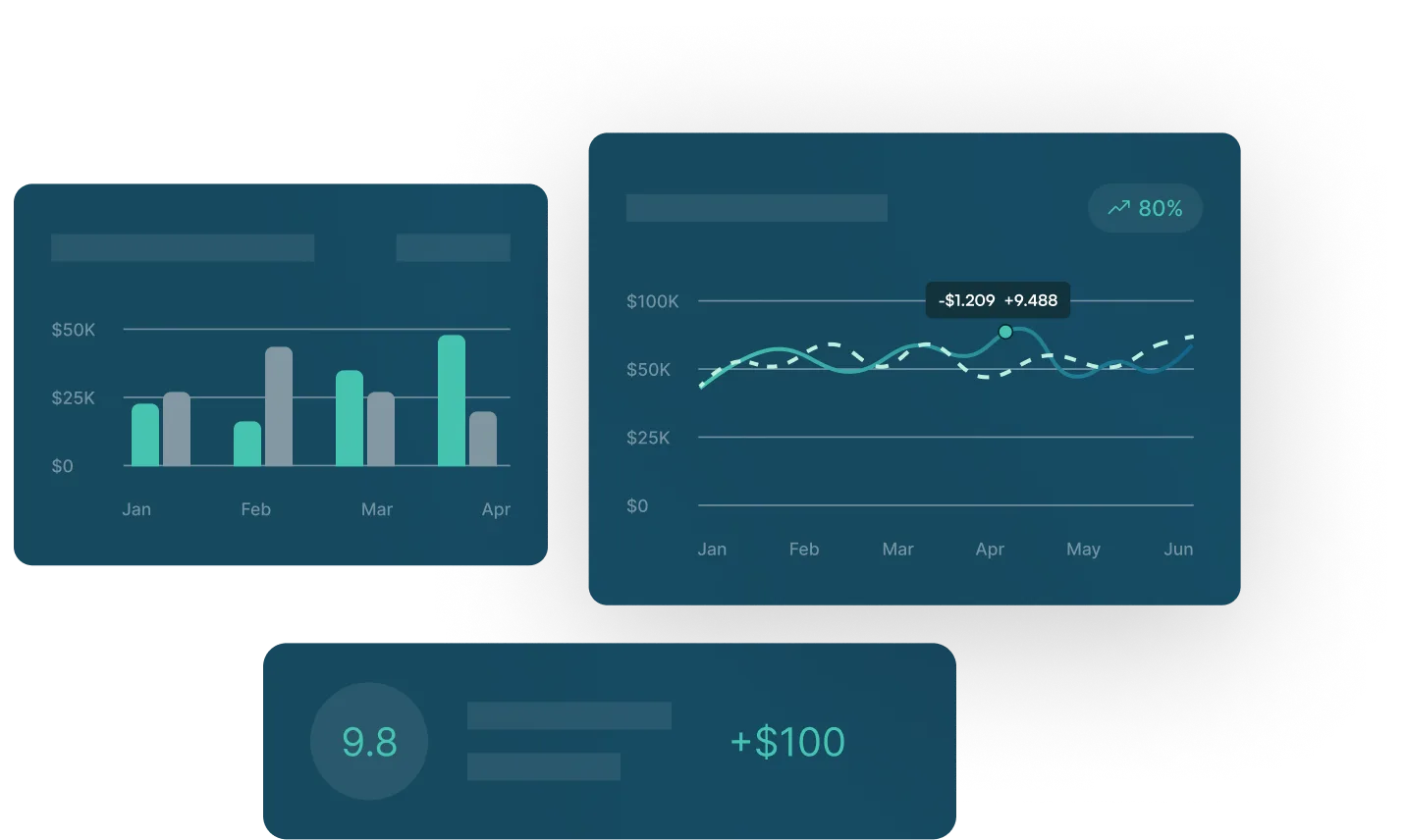

























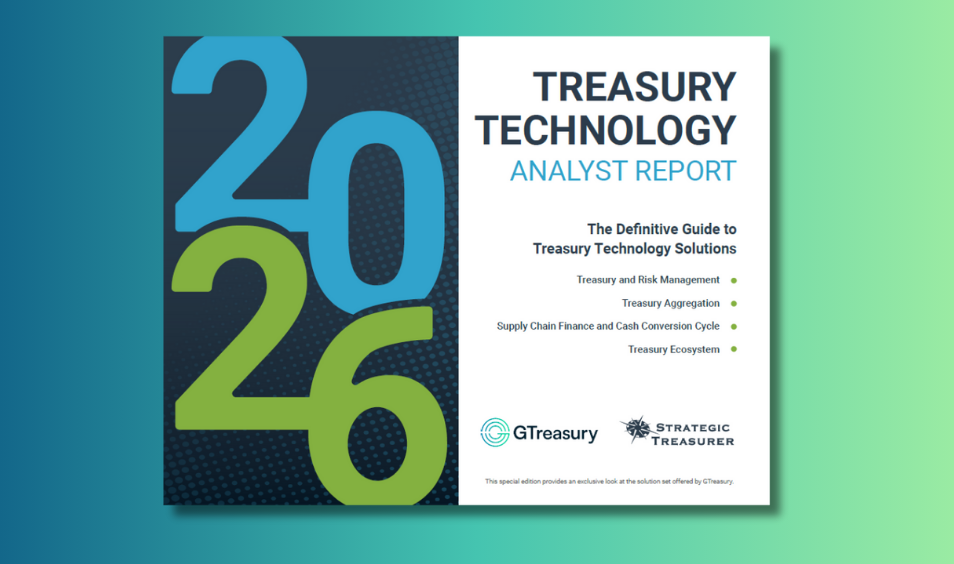




.png)
.png)




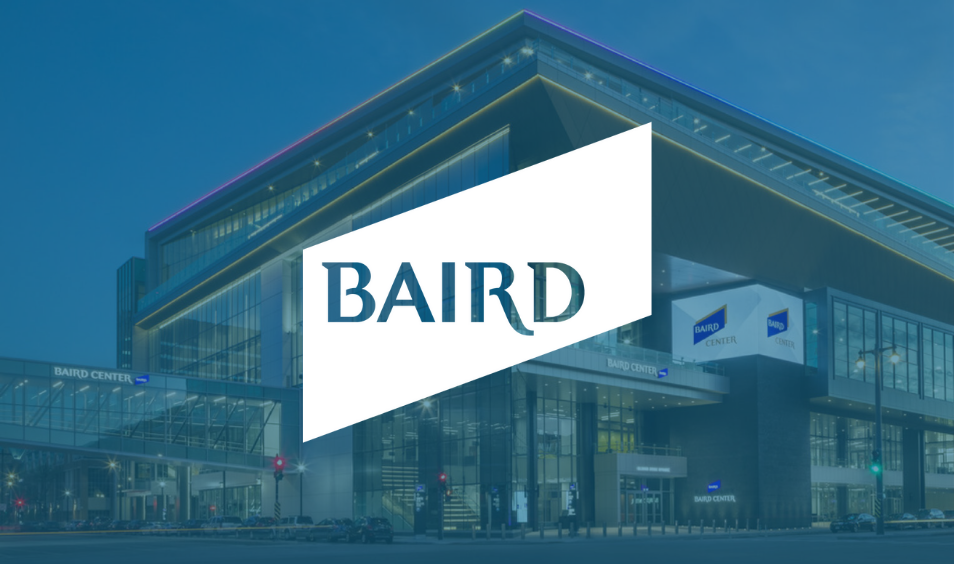









.png)
















